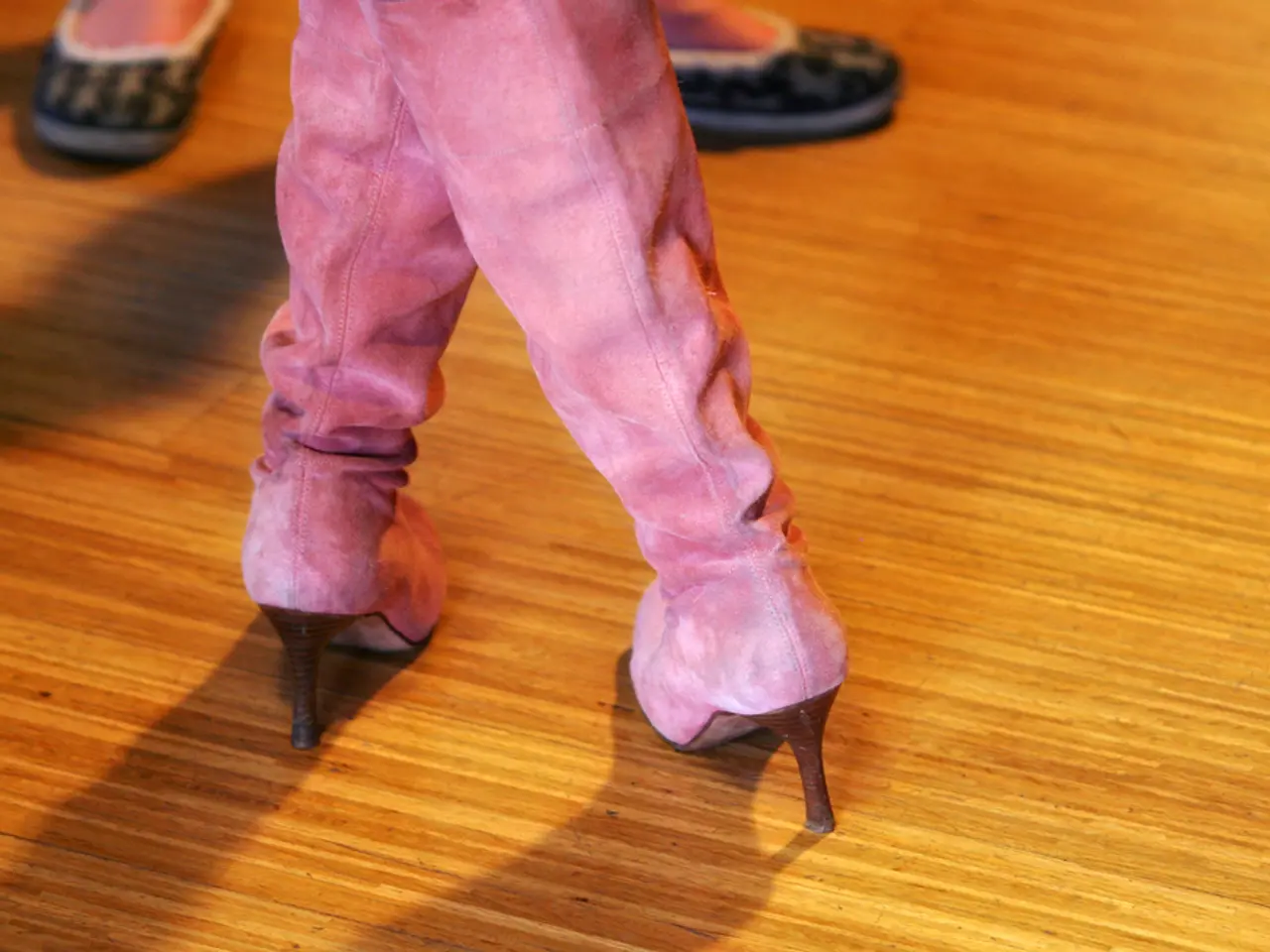Scanning Footwear with High Heels Utilizing X-ray Technology
High Heels and Hidden Health Risks: A Growing Concern
High heels, often used as fashion and attractiveness tools, can lead to a range of muscular and skeletal problems that are often overlooked by both patients and healthcare professionals. These issues, if left unaddressed, can have serious consequences.
The prolonged use of high-heeled shoes can result in shortened calf muscles and Achilles tendon, leading to muscle tightness and imbalance. This can cause ankle pain, increase the risk of sprains and strains, and alter foot arch function. Foot problems such as plantar fasciitis, stress fractures, arthritis, and altered gait patterns are common due to the change in load distribution and shock absorption in the feet.
High heels also impact the body’s posture and gait. The altered posture increases compressive forces on the lumbar spine, potentially leading to low back pain and disc degeneration over time. Even small postural deviations due to high heels magnify stress on the spine and lower extremities, contributing to musculoskeletal discomfort and injury risks.
One of the most severe consequences of prolonged high-heeled shoe use is Lisfranc injuries, which are fractures and dislocations of the bones in the midfoot. These injuries can occur due to the increased pressure and stress on the midfoot caused by high heels.
Recognizing and Addressing the Problem
Diagnosing high heel–related musculoskeletal problems involves a clinical assessment of symptoms, physical examination of the foot, ankle, and spine, gait analysis, imaging, and evaluation of muscle length and strength. Treatment strategies focus on relieving symptoms, correcting biomechanical issues, and modifying footwear habits.
Rest, ice, compression, and elevation (RICE) are common treatments for acute ankle injuries like sprains or strains. Physical therapy is used to stretch shortened calf muscles and Achilles tendon, improve strength and stability of lower extremity muscles, and retrain gait mechanics. Supportive footwear and orthotic devices can also help reduce abnormal foot loading.
In severe or persistent cases, specialized interventions including pain management and possibly medical or surgical treatment may be necessary. The key to prevention and treatment is addressing muscular imbalances, improving gait, and modifying footwear habits.
However, it's important to note that healthcare professionals, even those with expertise in related fields, may overlook muscular and skeletal problems caused by high heels. This issue is not limited to patients but also affects healthcare professionals who may overlook these issues. As a result, it's crucial for individuals to be aware of the potential risks associated with high heels and take steps to minimize these risks.
In conclusion, while high heels may be considered an "ordinary fashion tool", they can lead to health issues that are often overlooked. It's essential to be mindful of the potential risks and take steps to maintain good foot health when wearing high heels.
Science has drawn attention to the hidden health risks associated with high-heeled shoes in the realm of workplace-wellness, revealing a plethora of medical-conditions related to their prolonged use. These conditions, such as foot problems, alterations in posture and gait, and even Lisfranc injuries, are significant concerns in the health-and-wellness sphere. To combat these issues, a combination of fitness-and-exercise, mental-health practices, and skin-care routines can contribute to overall well-being. Moreover, therapies-and-treatments like physiotherapy, pain management, and surgical interventions may be necessary in severe or persistent cases. In the scope of women's health, awareness and treatment of high-heel health risks are vital to maintain not just foot health but whole-body wellness.




